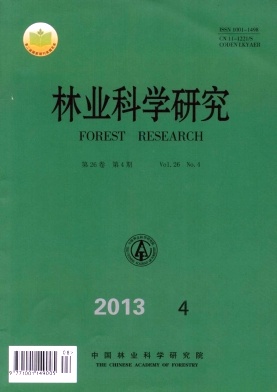|
[1]
|
虞佩玉, 王书永, 杨星科. 中国经济昆虫志叶甲总科(二)[M]. 北京: 科学出版社, 1996:82-196
|
|
[2]
|
陈 静, 张建萍, 张建华, 等. 双斑长跗萤叶甲的嗜食性[J]. 昆虫知识, 2007, 44(3):357-360
|
|
[3]
|
杜建军, 云 雷. 双斑长跗萤叶甲发生危害特点及防治措施[J]. 陕西农业科学, 2009 (3): 202-203
|
|
[4]
|
穆 丹, 付建玉, 刘守安,等. 虫害诱导的植物挥发物代谢调控机制研究进展[J]. 生态学报, 2010, 30(15): 4221-4233
|
|
[5]
|
Birkett M A, Hassanali A, Hoglund S, et al. Repellent activity of catmint,Nepeta cataria, and iridoid nepetalactone isomers against Afro-tropical mosquitoes, ixodid ticks and red poultry mites[J]. Phytochemistry, 2011, 72(1): 109-114 |
|
[6]
|
Ikeura H, Kobayashi F, Hayata Y. Repellent effects of volatile extracts from herb plants against larvae of Pieris rapae crucivora Boisduval[J]. Journal of Agricultural Science, 2012, 4(5): 145-148 |
|
[7]
|
Mann R S, Tiwari S, Smoot J M, et al. Repellency and toxicity of plant-based essential oils and their constituents against Diaphorina citri Kuwayama (Hemiptera: Psyllidae)[J]. Journal of Applied Entomology, 2012, 136(1-2): 87-96 |
|
[8]
|
Chung I M, Ahmad A, Kim S J, et al. Composition of the essential oil constituents from leaves and stems of Korean Coriandrum sativum and their immunotoxicity activity on the Aedes aegypti L[J]. Journal of Applied Entomology, 2012, 34(1): 152-156 |
|
[9]
|
严善春, 张丹丹, 迟德富. 植物挥发性物质对昆虫作用的研究进展[J]. 应用生态学报, 2003, 14(5): 310-313
|
|
[10]
|
杨长龙, 江世宏, 徐汉虹. 植物源驱避剂研究进展[J]. 植物保护, 2006, 32(6): 4-9
|
|
[11]
|
董桂蕃, 李承毅. 国外驱避剂研究动向[J]. 中华卫生杀虫药械, 2001, 7(4):5-8
|
|
[12]
|
陈展册, 苏 丽, 戈 峰, 等. 绿盲蝽对性信息素类似物和植物挥发物的触角电位反应[J]. 昆虫学报, 2010, 53(1): 47-54
|
|
[13]
|
李中新, 李庆和, 刘凤菊, 等. 火炬树(Rhus typhina)叶挥发性成分及其对两种叶螨选择行为的影响[J]. 生态学报, 2009, 29(2): 714-719
|
|
[14]
|
周弘春, 杜家纬. 风洞技术在昆虫化学通讯研究中的应用[J]. 昆虫知识, 2001, 38(4): 267-272
|
|
[15]
|
Erler F, Ulug I, Yalcinkaya B. Repellent activity of five essential oils against Culex pipiens[J]. Fitoterapia, 2006, 77(7-8):491-494 |
|
[16]
|
严善春, 程 红, 杨 慧, 等. 青杨脊虎天牛对植物源挥发物的EAG和行为反应[J]. 昆虫学报, 2006, 49 (5): 759 -767
|
|
[17]
|
张茂新, 凌 冰, 庞雄飞, 等. 非嗜食植物中的昆虫产卵驱避物及其利用[J]. 昆虫天敌, 2003, 25(1):28-36
|
|
[18]
|
张 康, 任丽燕, 李科明, 等. 植物挥发性气味物质对中红侧沟茧蜂的趋向行为影响及田间诱集效果[J]. 中国生物防治学报, 2011, 27(2):157-164
|
|
[19]
|
刘英胜, 严善春, 程 红, 等. 落叶松毛虫对兴安落叶松9种挥发性物质的行为反应[J]. 林业科学, 2009, 45(4):72-77
|
|
[20]
|
卢传兵,薛 明, 刘雨晴, 等. 黄荆精油对玉米象的杀虫活性成分、毒力及作用机制[J]. 昆虫学报, 2009, 52(2): 159-167
|
|
[21]
|
王茹林, 杨 伟, 杨佐忠, 等. 华山松大小蠹对9种植物挥发物的EAG和行为反应[J]. 中国森林病虫, 2011, 30(1): 23-26
|





 DownLoad:
DownLoad: